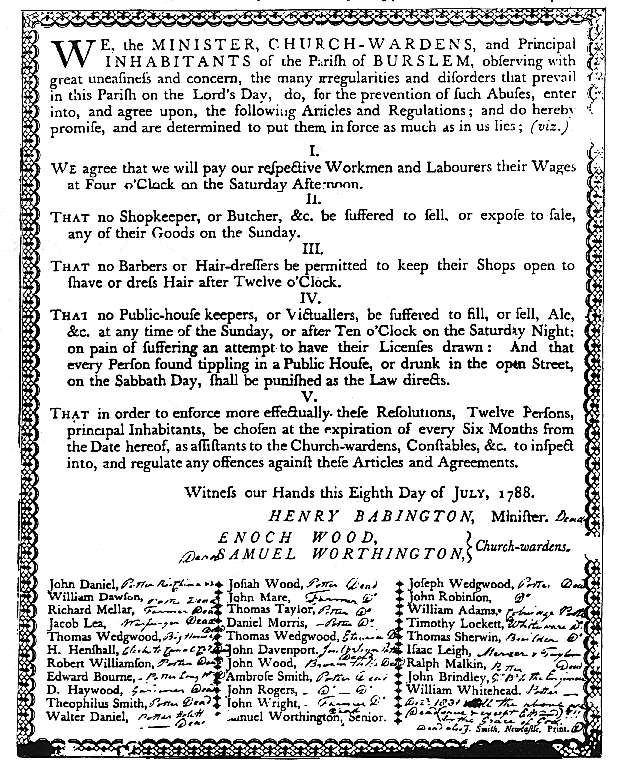 Church Warden Duties
Church Warden Duties
St John's
church was not merely a place of worship. The church vestry was also the place
where various decisions about the civil life of the parish were made. The most
important of these decisions related to the care of the poor.
Overseers of the
Poor were elected at the annual parish meeting and they supervised the
collection of the poor rates and the governor of the "Poor House"
located at Green Head (see 1832 map). Similarly the
Surveyor of Highways elected annually had the responsibility for the
maintenance of the local roads though increasingly this activity was devolved
to the new Turnpike Trusts.
As the notice
below shows the two Churchwardens played a much wider role in the community in
the 18th century than they do today. It was an important post filled by a
succession of prominent local tradesmen and pottery manufacturers in the
Georgian period.
Enoch Wood
was churchwarden for a number of years and this notice of 1788
appears to be very much his initiative. He put a copy of it in his scrapbook
and subsequently added the occupations to the list of people appended to the
notice. As one would expect they were mostly master potters, but the list also
included Thomas Sherwin responsible for the construction of many new buildings
in the town, Hugh Henshall clerk to the Trent & Mersey Canal Co., and John
Brindley, the brother of James Brindley, the canal engineer. (The
hand written comments are dated 1831 - not surprisingly most of them were dead
by this time, Enoch Wood died in 1840).

1788 Notice
issued by the Church Wardens
(when reading this remember that 's'
was written like an 'f')
![]()
![]() (1714-1837)
(1714-1837)